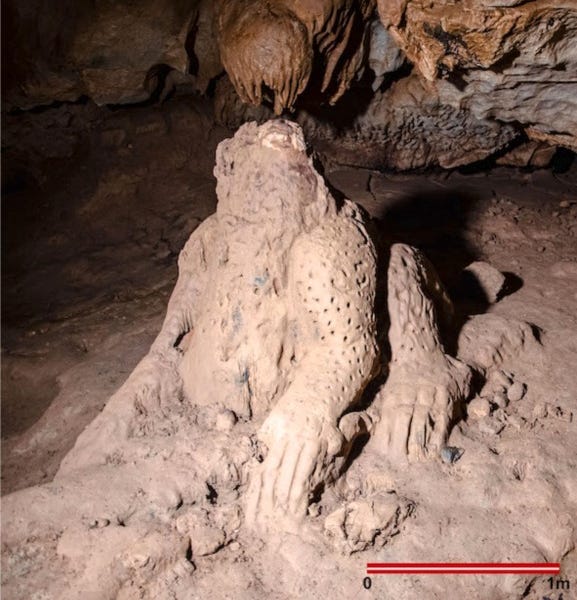A prehistoric skull (dubbed AC12) from Arene Candide Cave in northwest Italy reveals Europe’s earliest known case of intentional head shaping—dating to roughly 12,500 years ago (Late Upper Paleolithic). Digital 3D reconstruction and morphometric analysis show its elongated form wasn’t due to disease or injury, but likely the result of deliberate binding during childhood. This suggests body modification served as a cultural expression—perhaps of identity or status. The burial context, ...| www.ancientbeat.com
Mysterious Unfired Clay Sculptures Found in Mexican Cave — In the sacred Cueva del Rey Kong‑Oy in Oaxaca’s Sierra Mixe region, archaeologists have recorded up to 72 unfired clay figures ranging from about 2 ft 3 in (0.7 m) to 6 ft 6 in (2.0 m) tall, created over a millennium ago. These have been discovered gradually over the last few years, but this is a new study. Anyway, the figures include men, women (some anatomically distinct), children in seated or reclining poses,...| www.ancientbeat.com
In the Swiss Alps, researchers have discovered 7,000-year-old soil layers with furrows and animal tracks, providing evidence of prehistoric plowing. These findings in Sion, Switzerland, push back the known use of plows in Europe (and I believe, anywhere) by about a thousand years, to between 5100 and 4700 BCE. The animals used for plowing appear to be oxen and goats. This discovery, preserved by rapid sediment cover from a nearby stream, challenges previous beliefs about the development of ag...| www.ancientbeat.com



